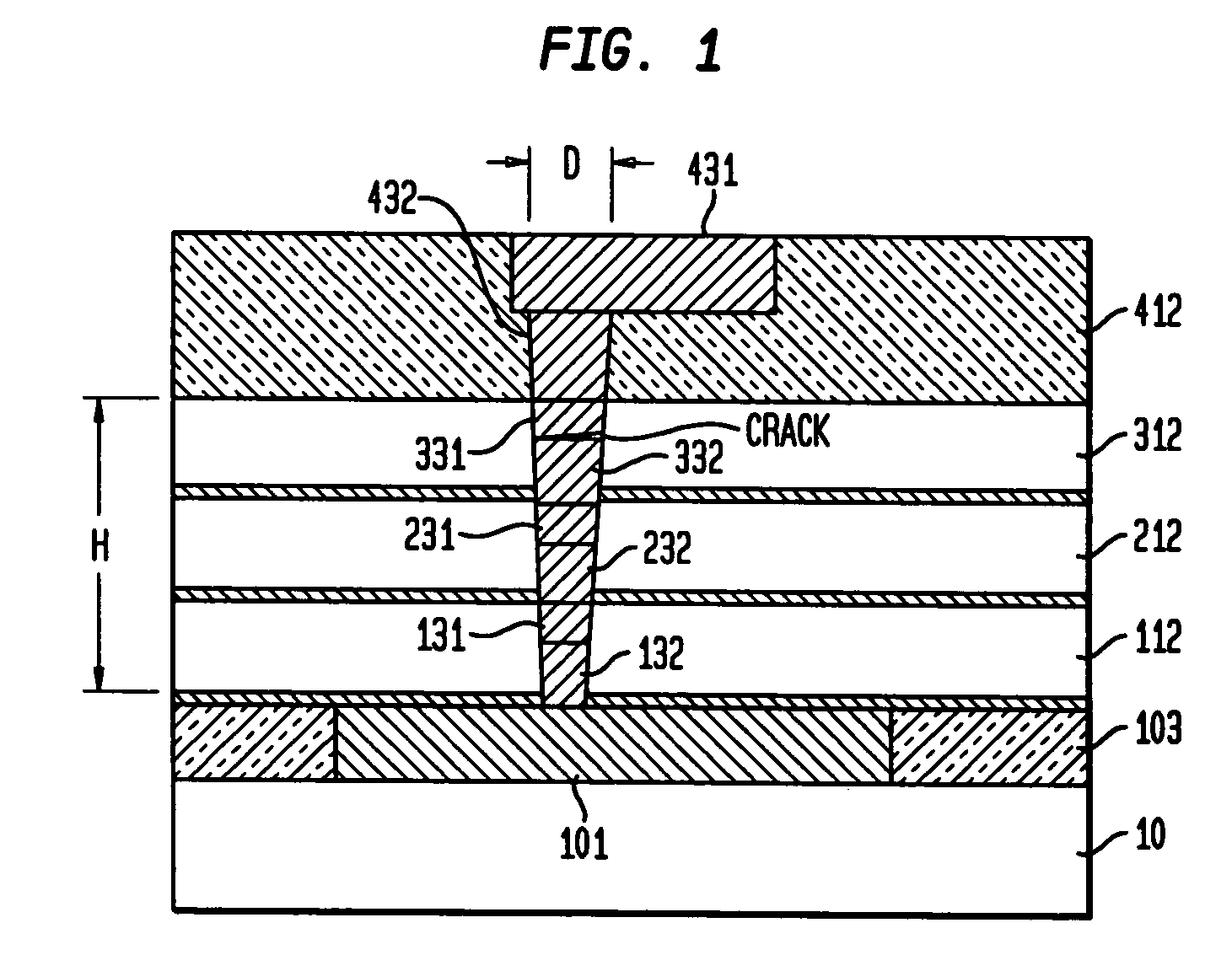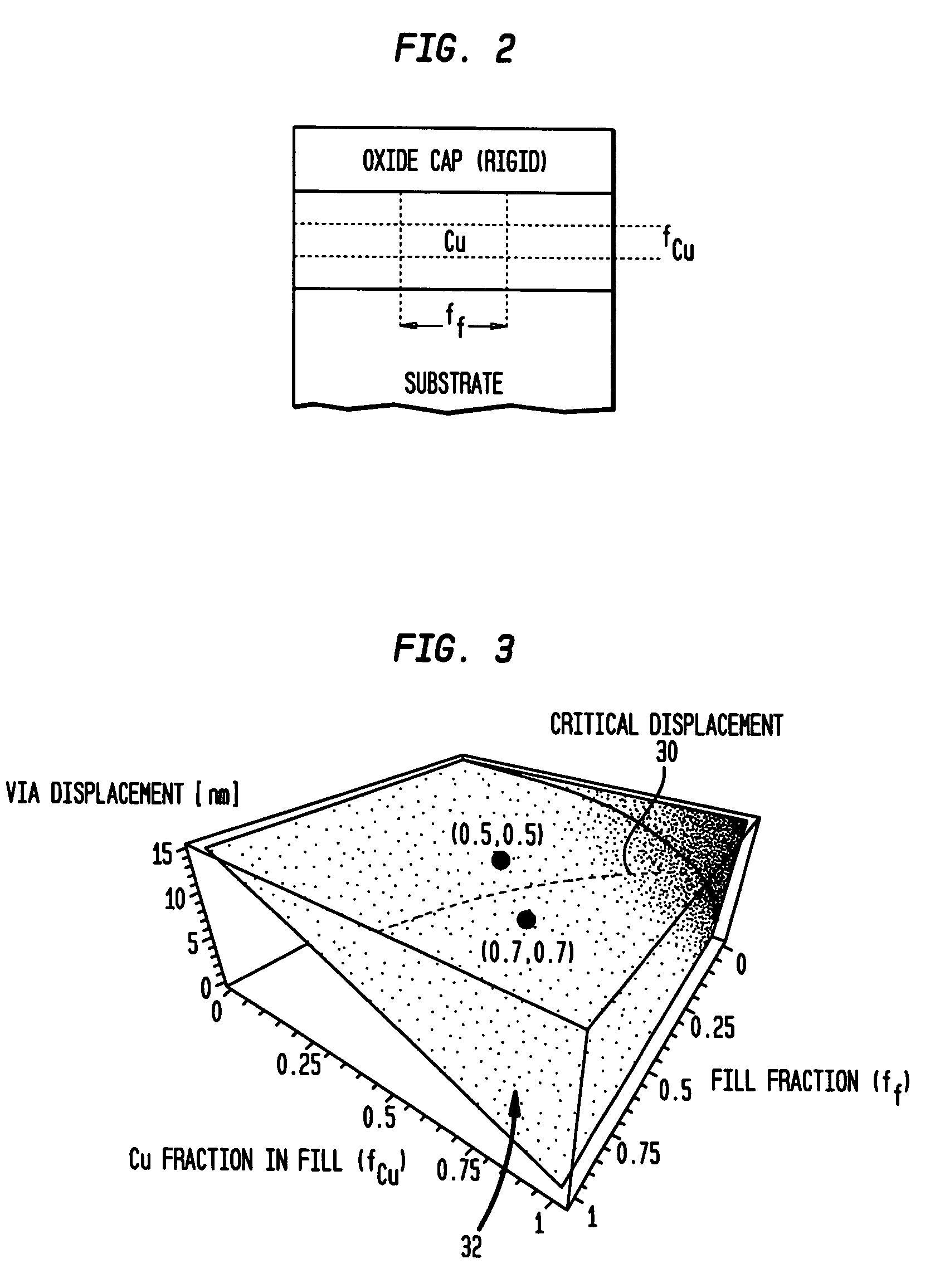Building metal pillars in a chip for structure support
a technology of structure support and metal pillars, which is applied in the direction of semiconductor devices, semiconductor/solid-state device details, electrical apparatus, etc., can solve the problems of increasing the tendency of stacked via-studs of present and future interconnection wiring schemes to crack, metal void formation and cracking within the interconnection,
- Summary
- Abstract
- Description
- Claims
- Application Information
AI Technical Summary
Benefits of technology
Problems solved by technology
Method used
Image
Examples
Embodiment Construction
[0037]The present invention provides new semiconductor processes and integrated circuit structures which incorporate stacked via pillars in multilevel interconnection wiring of semiconductor IC (integrated circuit) chips with high conductivity metallurgy such as Cu and low-k inter level dielectrics (ILD), to provide improved structural support and mechanical stability under large thermal excursions.
[0038]The present invention provides for the construction of metal stacked via pillars at different locations in IC chips to support the chip structure during processing and any related processing stresses such as thermal and mechanical stresses. These metal stacked via pillars connect in a straight line from the front end of line (FEOL) up to the far back end of line (FBEOL) and the final step of construction, extending from the base substrate to the top oxide cap.
[0039]The stacked via pillars are not necessarily electrically connected to any active lines or vias, however in some embodim...
PUM
 Login to View More
Login to View More Abstract
Description
Claims
Application Information
 Login to View More
Login to View More - R&D
- Intellectual Property
- Life Sciences
- Materials
- Tech Scout
- Unparalleled Data Quality
- Higher Quality Content
- 60% Fewer Hallucinations
Browse by: Latest US Patents, China's latest patents, Technical Efficacy Thesaurus, Application Domain, Technology Topic, Popular Technical Reports.
© 2025 PatSnap. All rights reserved.Legal|Privacy policy|Modern Slavery Act Transparency Statement|Sitemap|About US| Contact US: help@patsnap.com



